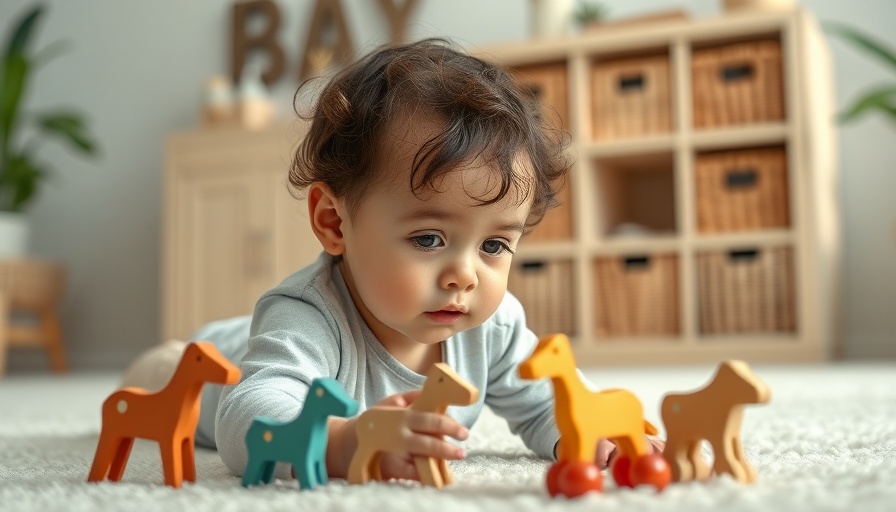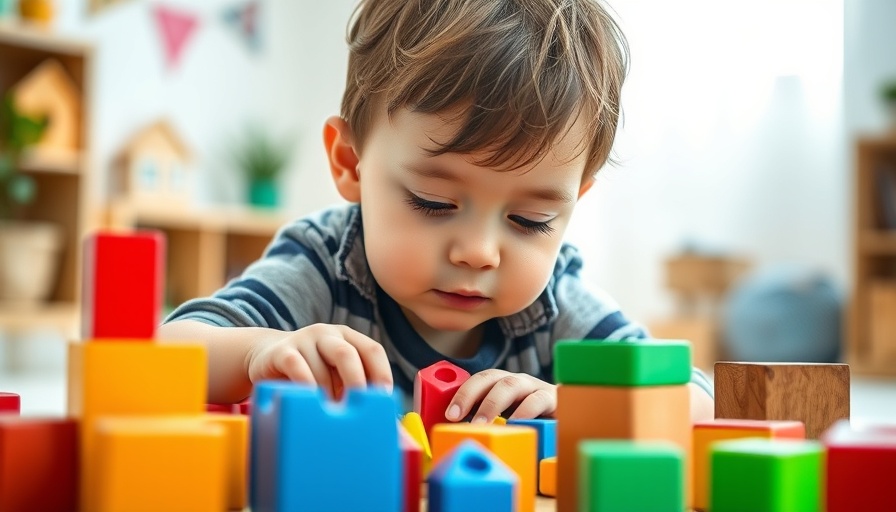
Embracing Mindful Play: The Power of Toy Rotation
As the holiday season gifts children a plethora of new toys, it opens the door to an important lesson in gratitude and mindful interaction with their possessions. This is where the concept of toy rotation comes into play, encouraging not only appreciation for current toys but also enhancing developmental skills. By regularly rotating toys, children can engage more fully with each item, helping to foster their creative play and problem-solving abilities—core tenets of the Montessori philosophy.
Understanding Toy Rotation
Toy rotation involves carefully selecting a limited number of toys for a set timeframe. This allows children to explore and enjoy each toy deeply before switching to another set. By reducing clutter, toy rotation transforms ordinary playtime into a more engaging learning experience. Many parents are surprised to notice that when a toy is cycled back into play after a break, it ignites new interest and curiosity within their children.
Why the Montessori Method Emphasizes Quality Over Quantity
With the Montessori approach prioritizing purposeful play, the emphasis lies on nurturing creativity and independent learning. This educational philosophy underlines the importance of keeping only a selection of meaningful toys available at any given time. The outcome? Children develop a stronger connection to their toys and explore innovative ways to play with them, reinforcing their problem-solving skills and attention spans.
Practical Steps for Successful Toy Rotation
If you're eager to implement a toy rotation strategy in your home, here are some essential tips:
- Assess Your Toys: Create an inventory of your child's toys, focusing on those that encourage open-ended play—think of toys that stimulate creativity and imagination.
- Blend the Old with the New: It can be beneficial to include both new and beloved older toys in each rotation, striking a balance that keeps play exciting and fresh.
- Establish a Rotation Schedule: Depending on your child's age and focus span, consider a rotation schedule of weekly, bi-weekly, or monthly swaps.
- Invite Participation: Engage your child in the rotation process. Allowing them to choose the toys that will be rotated cultivates responsibility, autonomy, and decision-making skills.
- Observe and Adapt: Regularly observe your child’s play preferences and adjust your toy selections accordingly, ensuring an enjoyable and meaningful playtime experience.
Promoting Sharing Through Toy Rotation
One underappreciated aspect of toy rotation is its potential to cultivate a sense of sharing among children. As they cycle through toys, children learn the value of sharing, encouraging group play and rich social interactions. A creative way to facilitate this is by introducing a 'sharing box' where children can voluntarily place toys they are willing to share with peers.
Potential Challenges and Misconceptions
While toy rotation can lead to numerous benefits, parents may initially struggle with the idea of limiting the number of toys accessible to their children. Some might believe that fewer toys equate to less fun. In reality, as acknowledged in many Montessori discussions, removing the overwhelm of toy clutter can lead to higher engagement and thoughtful play. Less noise and distraction allow children to focus profoundly on the task at hand.
Conclusions and Call to Embrace Mindfulness
Implementing toy rotation not only honors the essence of mindful play but also equips children with the gifts of gratitude, creativity, and social skills. As you make the transition into mindful toy management, consider how each choice can impact your child’s play experience. Join the movement toward intentional play—start rotating your toys, witness the transformation in your child’s engagement, and foster a heart full of appreciation!
 Add Row
Add Row  Add
Add 




 Add Row
Add Row 

 Add
Add
Write A Comment